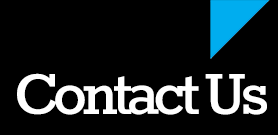
How to do it
The position is fairly simple as you can see in the picture. You simply lay on the ground with your hips bent to 90 degrees and your knees bent to 90 degrees. Your lower legs will be placed onto a chair or box or table etc. You will have your arms out to your side with the palms facing the roof. The exact position of the arms is not important, just have them where it feels most comfortable (for most people, this is between 45 and 90 degrees). You can lay in this position for as long as you like. I often recommend 20 minutes. Some fine tuning points:
- I have found that having the chair/box the same height as your knees makes it feel that much better. Putting your feet up onto a low chair/box does work but it just not as well.
- If you have a bigger curve in your mid back, lying flat on the ground may cause your head to tilt back. It is best to have your head parallel to the ground. Fix this by putting a folded towel under the head to level it out.
- I have found that putting a wheat bag under the neck when doing this works really well for easing the muscular tension of the shoulders and neck. This works great for headaches, as a lot of headaches can arise from the neck.
Why do the static back position? What does it help?
The main reason this position works well is that it puts you into a neutral posture. Most people these days have some sort of postural distortions. These may be pelvic tilts, rounded shoulders and a forward head position. Lying in this position on the ground takes out all of these problems. It can be used for:
- Lower back/hip pain
- Mid back pain
- Neck pain
- Headaches

Sometimes due to pain or mobility issues getting on the ground can be difficult. To get around this, you can do the same position on your bed. Simply stand a chair onto the bed to put your legs up on it. It is not as effective doing it on the bed as the ground, but it will still be worth it.
Progressions
There are several things you can do to add to this position to make it that much better.
- Diaphragmatic breathing. When you are lying in the position, practice diaphragmatic breathing. Simply put one hand on your chest and one hand on your belly. Breathe in through your nose making sure that only the hand on your belly moves up (ideally we want the abdomen to expand in all directions). Then breathe out (exhalation) through your mouth. Make the exhalation last longer than the inhalation as oxygen is delivered to cells on exhalation. Here is an example.
- Core activation. Whilst you are resting in this position you could also practice some core activation/Bracing. This is basically turning on your core. This is good practice to help stabilize your back and help prevent injuries. I will write a post on this soon.
- Core activation II. You can make your core work harder straight away by putting your feet onto an exercise ball. Rather than resting your whole lower leg on the ball, just place your heels on the ball. Try it and feel the difference.
- Chest stretch + core activation III. One of my favourite progressions for this position is to lay in the same position but this time do it lying on a long foam roller. Being on the foam roller cause immediate core activation which is great, but what is even better is the chest stretch your get from being slightly elevated from the ground. If you spend a lot of time sitting at work or being bent over all day, you will love this variation.
I would encourage you to try this position and most of you probably have already tried it, or at least a variation of it. The details are important though. The better you can do it, the better the results will be.
If you have pain or discomfort when doing it please stop and seek appropriate help. For more information on this exercise please contact me and I will do my best to answer it. I am happy to help.



 RSS Feed
RSS Feed


